As a heritage photographer I’m constantly looking at the buildings of the past and despairing over the uninspiring state of their present day equivalent. Grand old hospitals were designed like stately homes, red brick mills like industrial cathedrals, and public baths… Well, they looked like this.
A few weeks ago I was in Birmingham to see a fine old slice of Edwardian Britain on the brink. I wasn’t even planning to write about it here but the overwhelming reception it received on Instagram changed my mind, and reminded me just how much an abandoned swimming pool seems to capture peoples’ imagination. I’ve thought about this before and surmised that perhaps it’s the familiarity factor, but I’ve never really been sure why people are particularly drawn to them over other abandoned places.
These old pools represent something of an anomaly in terms of British heritage, and indeed of public amenity, in that the public were clamouring for them to reopen almost as soon as they closed. Unlike redundant mills, hospitals and churches where repurposing is essential if they are to survive for the future, there is an increasing call for the surviving public baths to be reopened in their original capacity – even where their replacement leisure centres have been relatively short-lived and disappeared with little resistance or sadness.
Moseley Road Baths was a rather belated response to an 1846 Act of Parliament that encouraged the provision of public baths in an attempt to improve public health, in an era when most houses didn’t have any running water. They opened in 1907 and showcase Edwardian craftsmanship at its best, but after 96 years of swimming the Gala Pool (pictured here) was closed over structural deficiencies and has never reopened. That was back in 2003, just as Griff Rhys Jones and his BBC Restoration team were championing a similar cause – Manchester’s Victoria Baths – and galvanising the nation’s attention in the process.
Since then it’s been Grade II* Listed and a friends programme has battled to save it while intermittently running the smaller second-class pool on site. Despite structural repairs to the building overall around a decade ago, the Gala pool is in dire need of money and the threat of closure over the whole complex looms ever large.
Arriving in Balsall Heath the exterior of the baths offered a hint of what we might expect to find inside, the lavish terracotta Baroque detailing embellishing its red brick walls. What lay behind the doors was yet another time capsule of somewhat epic proportions…

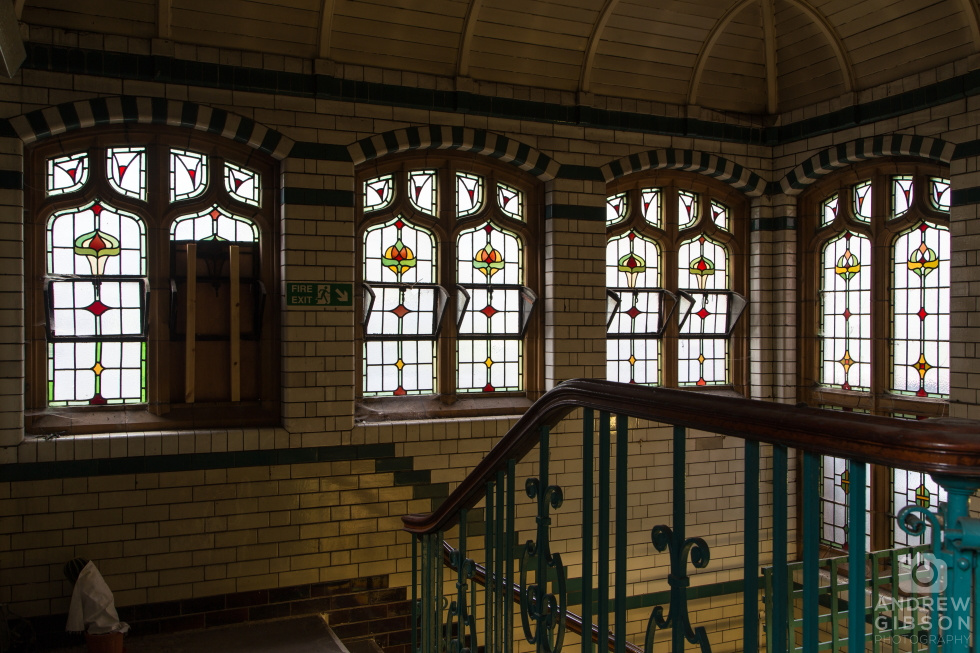
Huge cast iron arches with ornate detailing support a blue painted wooden ceiling atop glazed brick walls in cream, ivory and teal.
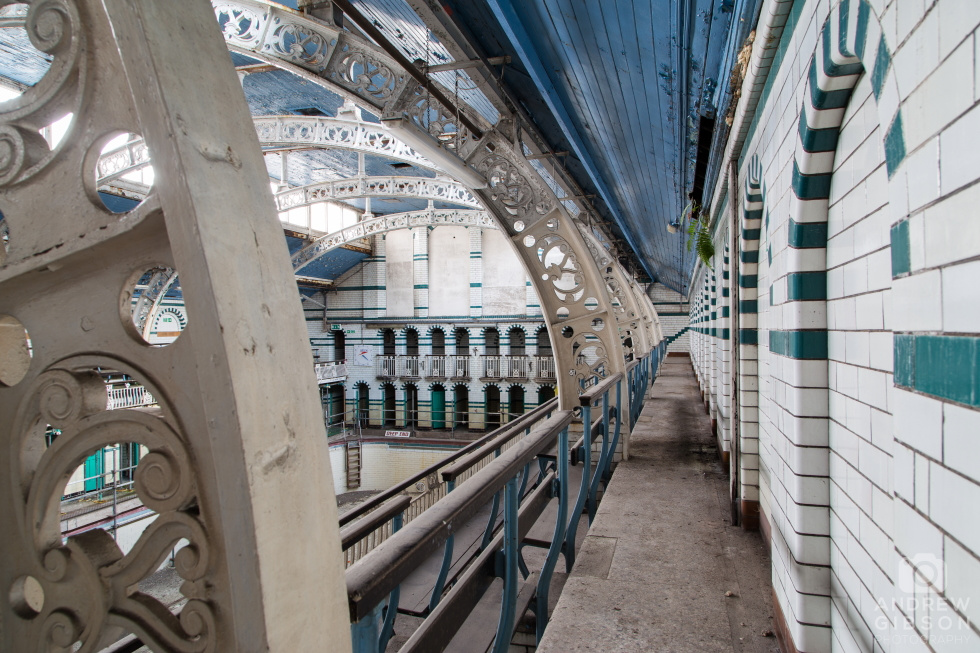
The upper galleries hold seating behind iron railings topped with fine wooden ballustrades, while below 63 glazed brick cubicles are fitted with solid teal painted doors. Men to the left, ladies to the right…
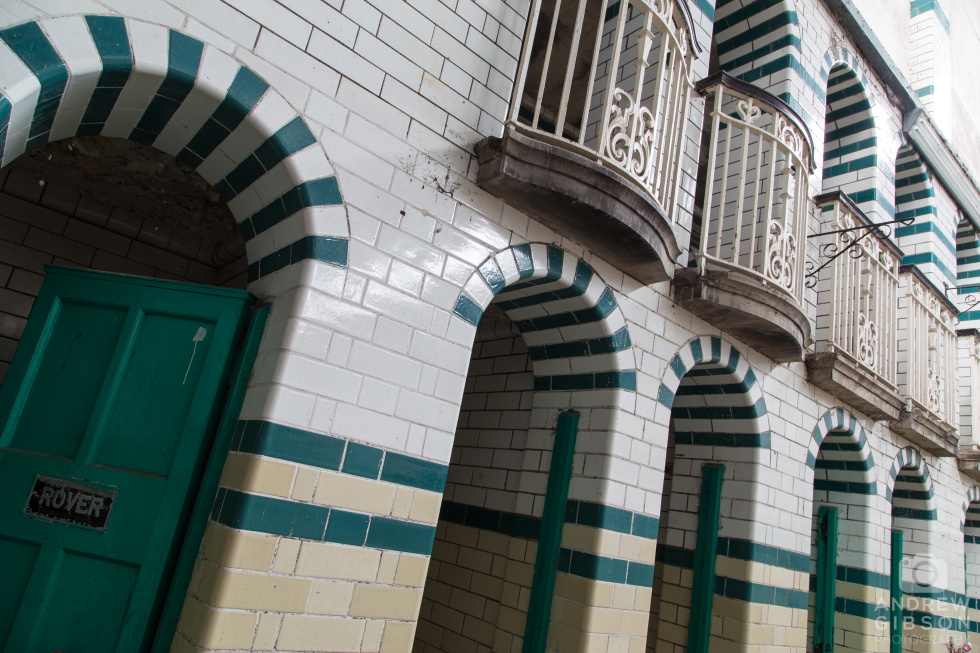
This beautiful ticket window has long since been blocked up in a room full of private ‘slipper bath’ cubicles, again long closed.
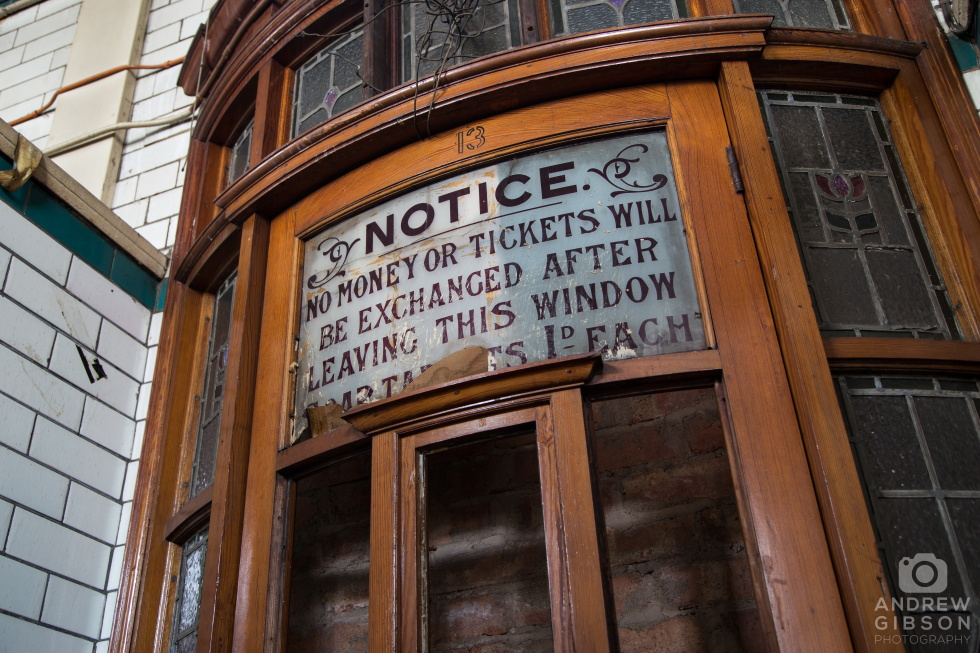
Leaded lights still adorn the windows and internal glazed doors…

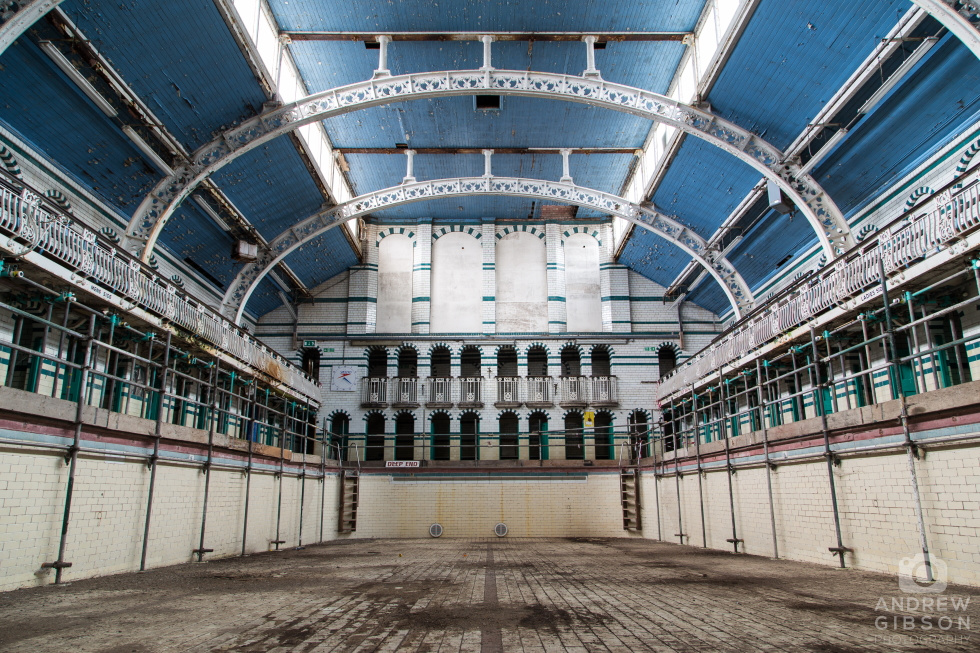
Back in September I wrote about the national disgrace that was Chatterley Whitfield Colliery, where the colliery museum was closed for the sake of a funding shortfall of a few thousand pounds and the site was asset stripped and closed. It’s now a deteriorating Scheduled Ancient Monument in need of tens of millions of pounds to save it.
This has become an all-too-familiar discovery on my travels and bath houses like this remind me why. Ultimately their salvation will depend on people actually visiting and using them, but we are once again living in a nation that is pushing a health agenda and places such as these can positively contribute towards that – the very reason for which they were developed in the first place. You can’t help thinking that allowing them to close was all rather short-sighted…

Comments
Glen